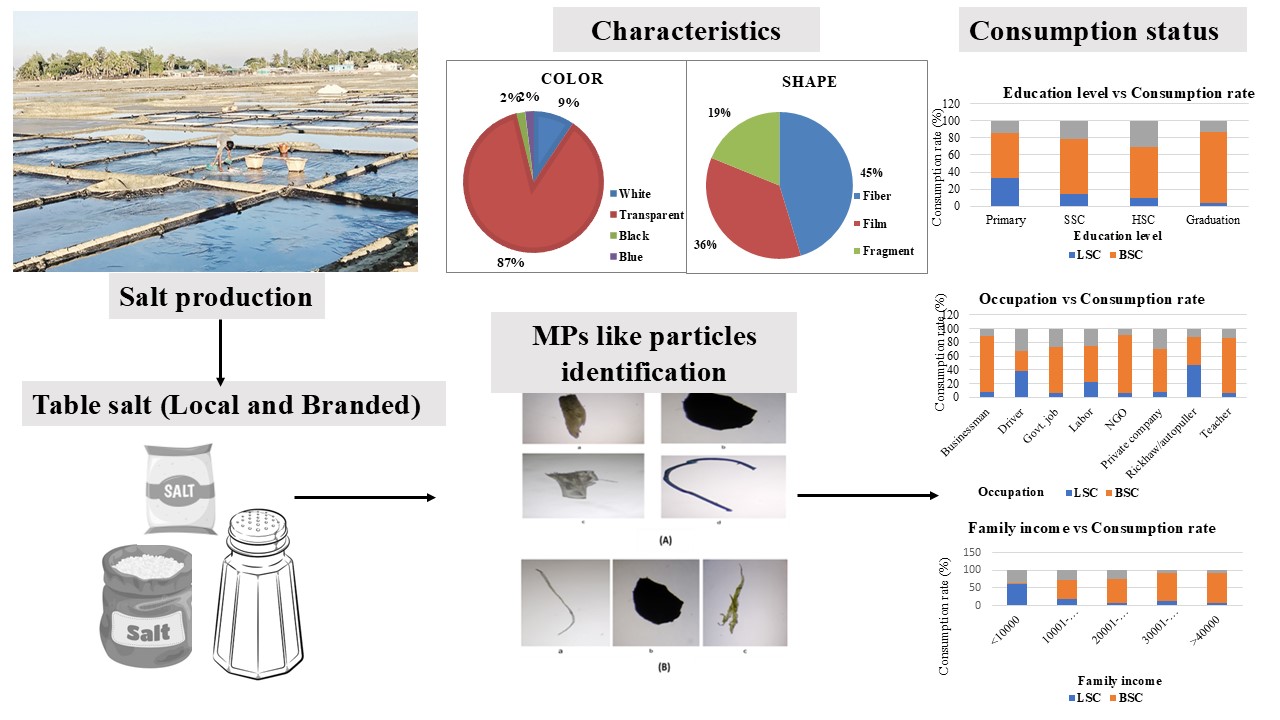Microplastic Contamination in Table Salt: A Study of Consumer Behavior in Cox's Bazar, Bangladesh
Main Article Content
Abstract
Plastic particles resulting from the breakdown of bigger plastics may be introduced directly as micro- and nano-sized particles polluting the marine ecosystem, including ocean-extracted table salt. This study investigated the presence of microplastic (MP)-like particles in table salt from Bangladesh, focusing on both locally refined and commercially branded varieties. Local salt samples from Sadar and Moheshkhali Sub-district of Cox’s Bazar contained an average of 23.4 and 12 particles kg-1, respectively. In contrast, no particles were detected in commercial brands, likely due to their complex refining processes. The study also explored factors influencing local salt consumption, finding it influenced by the economy, availability, education level, occupation, income level, and misperceptions about local salt's health benefits compared to commercial brands. Interestingly, the study found that 71% of local salt consumers believed it to be more beneficial than branded salt, while education level influenced salt preference, with 83% of graduate and 53% of primary-educated individuals opting for commercial brands. These findings provide a valuable foundation for further research on MP exposure in different consumer groups, highlighting the need to investigate potential health risks and inform policy decisions regarding MP contamination in table salt in Bangladesh.
Article Details

This work is licensed under a Creative Commons Attribution-NonCommercial 4.0 International License.
Published articles are under the copyright of the Applied Environmental Research effective when the article is accepted for publication thus granting Applied Environmental Research all rights for the work so that both parties may be protected from the consequences of unauthorized use. Partially or totally publication of an article elsewhere is possible only after the consent from the editors.

